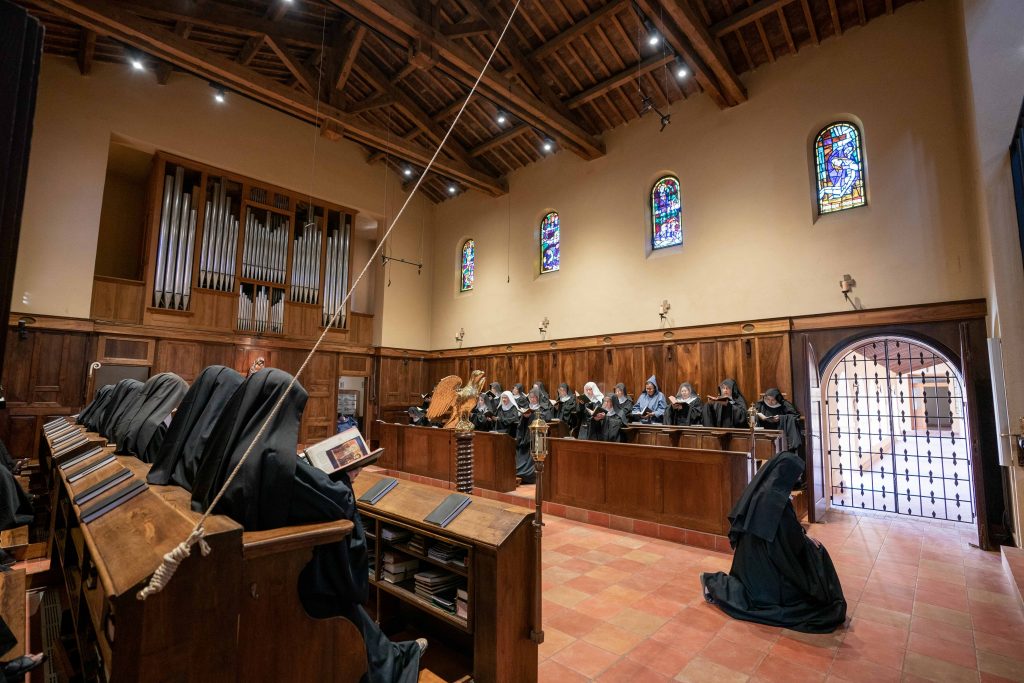
The use of Gregorian chant as a means of prayer is not something new or a novelty, on the contrary, it is a form of prayer and praise that has been intonated for more than twelve hundred years every day and in every part of the world. Monasteries and religious communities still use it as a means of prayer, praying for all of us. However, there are prejudices that this type of prayer is not for the layman, because he will not understand Latin, and that it is only for those consecrated to religious life. This is a misconception, furthermore, it is far from the truth, because Gregorian chant is for all members of the Church and is practiced today (sadly in a minimum way and due to lack of knowledge and personal interest). However, the prayerful person who obeys what God has granted to his Church prays with his official chant, Gregorian chant, and does so during the Divine Office, in the Sacred Liturgy, privately or communally. This prayerful person or cantor is aware that sung prayer serves God to unify, for his glorification, and to remain in communion with Him, with the entire heavenly and earthly Church. This is like this for all or should be so.
St. John Chrysostom himself advises us by writing these wise words: “You make a covenant with God, you sign a covenant with him, without ink or paper. Your voice proclaims that you love him…let us not sing the responses with routine, but let us take it as a staff for our journey. The response that you have sung, not once, not twice, not three times, but many times, remember it with interest, then it will be of great comfort to you. I exhort you not to leave here empty-handed, but to gather the responses like pearls, that you may always keep them, meditate upon them, and sing them to your friends.”
It is of the utmost importance that within the same faith and universality there is something in common for the union of all: that the Word of God is enlivened with sacred chant and that it enlightens us towards the perfection of the soul. So why not make this sung prayer our faithful companion, so that we may walk more securely hand in hand with God, united in prayer during the different stages of our lives, and especially during the liturgical seasons?
Moreover, this is what Dom Jacques-Marie Guilmard, a monk of the Abbey of St. Peter Solesmes, says about sacred chant: “Chant is an interior force that comes from us, that enraptures us, that brings out the beauty in us, that expresses the text because it makes it shine, giving it a higher dimension. At the same time for the one who chants, deepens, and interiorizes it, there is an incarnation of the chant in the one who sang it. There is at the same time a sublimation towards the exterior and an incarnation towards the interior of oneself.” We could even dare to affirm: Verbum cantus factus est! And the Word has become chant!
On the other hand, we can ask ourselves, why do some do this and not others, since it is not merely a matter of joining together to sing, but to pray unanimously? Just as there is mental prayer, spoken or recited, there is also sung prayer in the eternal existence of God, even more so with the Canticum Novum, the New Song, which is contemplative and liturgical. It is in all Sursum Corda, that by glorifying God and meditating it is transformed, by the Lord himself, into an aid, a joy, and the greatest hope. So, let us become aware, let us not go out empty-handed, let us prepare ourselves properly for Easter, let us pray singing, and let us offer the pearls of our souls as offerings to the Heavenly Father because everything belongs to Him, everything in the name of Jesus who purifies and redeems us during this Lent and forever.

